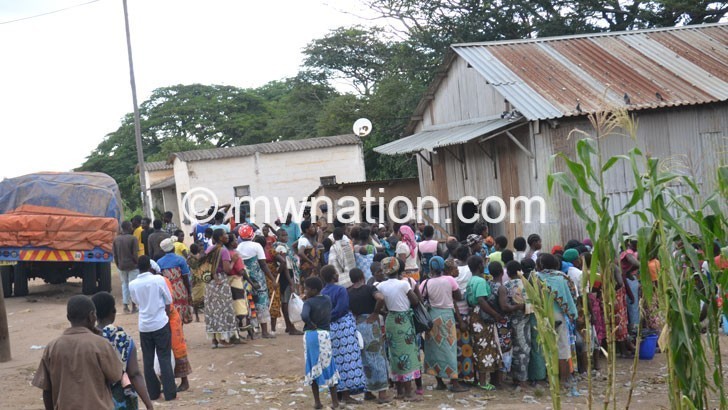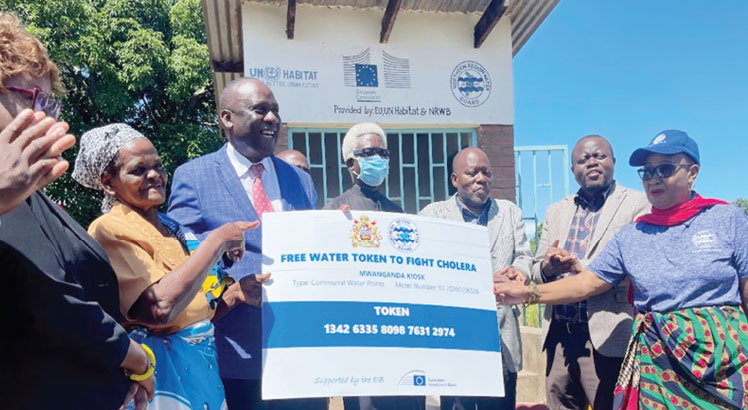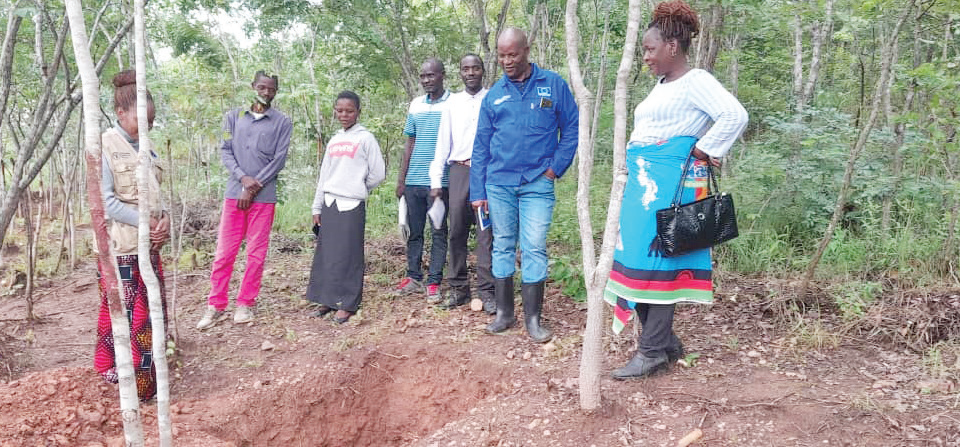Fast-tracking Megafarms
During the 2020 presidential campaign, the governing Tonse Alliance promised to establish megafarms across the country to boost agricultural production and national development.
However, two years on, not much has happened on the ground to fulfil the promise.

The pledge came back to life two weeks ago when President Lazarus Chakwera expressed dismay at the slow progress and inaction. The President has ordered the Minister of Agriculture to deliver the first megafarm within six months.
At last, there is some political will to deliver the megafarms that swayed some voters.
As a citizen with an interest in agricultural transformation, I share my thoughts on what I believe are some of the things that need to be done to accelerate the process of coming up with these megafarms across the country.
If established as anchor farms, the megafarms will have a lasting impact on the surrounding farming communities, not just the farmers.
They will address several challenges faced by smallholder farmers, including lack of technical support and markets access.

The idea of having large farms alongside the smallholder farms is similar to a post-colonial dualist policy established to encourage a spillover of technology from the estates to the smallholder farmers.
The knowledge acquired through the learning-by-doing, wage employment on the estates could be used by the smallholder farmers on their own crop fields.
The estates could help ease pressure on land as more people could find wage employment on the estates.
However, one of the challenges with this post-colonial policy, which could offer lessons in the conception of the megafarms, is that it did not have a clear framework of engagement between the estates and the smallholder farmers.
There were no clear safeguards to prevent smallholder farmers’ exploitation by the estates. An exploitative tenancy system perpetuated poverty among the smallholder farmers.
As such, not much was realised from this arrangement and the hope of effectively integrating the smallholder farmers into the capitalist farming arrangement.
The other policy arrangement that the government came up with to encourage smallholder farmers participation in high value chain was the creation of commodity authorities under the Special Crops Act of 1965. These included tea, sugar, flue-cured tobacco and coffee value chains.
The development of the megafarms concept needs to learn from history to come with models that will deliver mutual benefits between the farming communities and the higher value-chain players.
Additionally, the megafarms initiative should learn from the experience and lessons recently accumulated through the Greenbelt Initiative in terms of access to land, water and financing.
These promised farms, if properly designed with a strong link to the industry, could become a big push for industrialisation and enforce the mutual inclusivity of the agriculture sector and the industry.
Sadly, the agriculture initiatives government has been implementing in the past 20 years have failed to trigger real and lasting growth of the sector. Generally, the government has been preoccupied with achieving food security through financing costly subsidies than development of agriculture value chains through strategic sector investments.
Programmes such as the Agricultural Commercialisation (Agcom) Project, funded by the World Bank, have not brought significant change to the sector as we had hoped.
The megafarms, therefore, could go a long way in complementing the efforts we currently have through such programmes. If government takes keen interest to analyse and strategically invest in the sectors that form a supporting system for these mega farms like energy and transport infrastructure, these megafarms could become the magic wand Malawians have always needed for the country’s economic turnaround.
This is why the presidential directive for quick action to make megafarms work is overdue.
However, without delving into the merits and demerits of the directive to establish a mega farm within half a year, let me point out three policy options that the government can consider if they find merit on them to accelerate the establishment of these farms.
Back to basics
First, the government should consider establishing State-owned megafarms using State institutions such as the Agricultural Development and Marketing Corporation (Admarc) and the Greenbelt Authority.
Every country requires having a productive sector that it considers as its major growth pole. As such, they take keen interest in those sectors. In some countries, such sectors are protected as a matter of national security.
Currently, that sector for Malawi is agriculture. When it comes to effective management of State-owned enterprise for agriculture, Malawi can learn from other countries in Africa such as Ethiopia where such institutions have accelerated the transformation of strategic value chains.
However, there is a need to put in place careful safeguards so that such an arrangement should not impinge on the growth of the private sector, but rather facilitate it. Although this may go against Malawi’s neoliberal free market theories of development, it must be seen as a necessary evil if the government wants to transform agriculture.
In fact, this will be in line with the developmental state philosophy that Chakwera’s Malawi Congress Party (MCP) propagated during the presidential elections.
This will not be the first time the country will do this. Shortly after the fall of colonial rule, the government achieved this among others through Admarc, which directly funded the estate sector and also established its own farms.
Admarc was the main mover and shaker in the agriculture sector, a major driver for the growth of several value chain.
Additionally, the Ministry of Youth established the Spearhead initiative, which established agriculture farms across the country with the support from the Malawi Young Pioneers.
Although this arrangement had its own challenges, the disarmament of the MCP paramilitary wing during Operation Bwezani in 1993 threw away the baby with the bath water. Government could rethink his model if it fits with its aspirations.
Why not PPPs?
The second option could be sealing public-private partnerships through existing structures such as the Greenbelt Initiative.
Under this arrangement, government can enter into an agreement with institutions such as Press Agriculture to revive all its idle estates through a shared funding arrangement.
It is sad to note that most of Press Agriculture estates lie idle to date. A public cash injection not only into production but also processing could help revive the lost glory of Press Corporation’s farming footprint throughout the country.
The first mega farms to show off in six months could be by reviving the idle estates. These are low-hanging fruits because land is already available and what remains is to start producing viable crops at industrial scale while linking these estates to the industry.
The third option could be establishing an agriculture modernisation facility through the Malawi Agricultural and Industrial Investment Corporation or any other agriculture financing institution.
Through this arrangement, estate owners with at least 40 hectares could be supported with soft loans to procure farm machinery, including irrigation equipment.
To access the financing, they may have to demonstrate an existing arrangement with the processing companies and their capacity to become an anchor farm arrangement through contract farming with farmers in their vicinity.
If developed, a comprehensive loan package could lead to privately owned megafarms
In terms of funding for these proposals, government should consider making cuts on programmes not delivering desired outcomes, including the Affordable Inputs Programme (AIP).
For two years, the farm inputs subsidy programme has consumed more resources than it has delivered.
In fact, Malawi managed to produce a surplus through the subsidy when it targeted 900 000 people at a fifth of the current AIP budget.
The government can productively use the AIP resources to transform agriculture at a less political cost if well communicated to the public.
Enhancing food security has been the government policy and agenda for decades, but agriculture transformation will need policymakers to take a different route than what we have always done.





